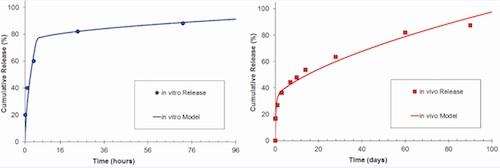Magnetic Sensor ICs Offer Integrated Diagnostics for ASIL Compliance
January 30, 2014

The current revolution in intelligent vehicle control systems relies substantially on the rapidly developing physical detection technology called magnetic sensor integrated circuits. The complexity, reliability, flexibility, and functionality of these non-contacting, magnetic sensor ICs have all but dispelled the need for electromechanical switches in just about every application in latest-generation automobiles.
Yet, accompanying this increase in usage of complex electronic devices, is a heightened concern over difficult-to-detect, system-level risks. This, in turn, has led the automotive industry to focus on automotive functional safety. The ISO 26262 functional safety standard outlines a development process including predictive analysis to minimize risk. This process, in turn, requires advanced diagnostics capabilities integrated directly into magnetic sensor IC systems. An examination is made of a new type of magnetic sensor IC that implements integrated diagnostics, using an innovative embedded solid-state coil for end-to-end system test.

Open the door of any recent-model automobile, and you are immediately surrounded by an invisible network of electronic sensors. They detect seat belt buckling, window or sunroof pinching, gear shifter position, engine transmission rotational speed and direction, and camshaft position, to name only a few applications. The penetration of real-time sensing into these applications has been made practical by developments in various types of non-contacting magnetic detectors -- e.g., Hall effect, giant magnetoresistive (GMR), anisotropic resistive (AMR), etc.
In addition to having very small form factors, these state-of-the-art, solid-state, semiconductor ICs are: cost-effective, power-efficient, non-contacting, and gather a pervasive data stream in the harshest environment of vehicle engines with the subtlety to respond to the slightest of changes in vehicle conditions.
These detection systems provide an advanced level of computing sophistication, providing a high degree of output permutations. This has presented a challenge in achieving functional safety per ISO 26262, because the combination of device state complexity and the almost infinite variety of vehicle operating conditions makes it unlikely that all usage scenarios and failure modes can be anticipated by design or discovered in testing programs. Given that almost instantaneous response may be required to protect passengers and preserve the vehicle, these ingenious detection systems must be able to self-diagnose, and often even correct themselves, when they are functioning improperly.
Traditional solutions use electromechanical switches with limited operational states (operating or not), so failure detection is straightforward. Welded reed switch contacts prevent a short. Broken switch springs prevent output state change. System-level failures are difficult to anticipate. Preventive maintenance is often based on generic mean time to failure (MTTF) data, with switches over-designed to accommodate all reasonable circumstances without adjustment.
ICs can provide suboptimal outputs, so automotive use requires additional safety measures to avoid unreasonable residual risk according to Automotive Safety Integrity Levels (ASIL), ISO 26262. ASIL assigns safety goals, rather than characterizing entire systems or components. The rigorous ASIL level D requires manufacturers to follow strict development guidelines, including Failure Modes Effects and Diagnostics Analysis (FMEDA) to quantify even very low risks of failures. These complexities require comprehensive diagnostics to ensure detection of system-level failures and enable safe (limp home) modes.
About the Author(s)
You May Also Like



.jpg?width=300&auto=webp&quality=80&disable=upscale)

